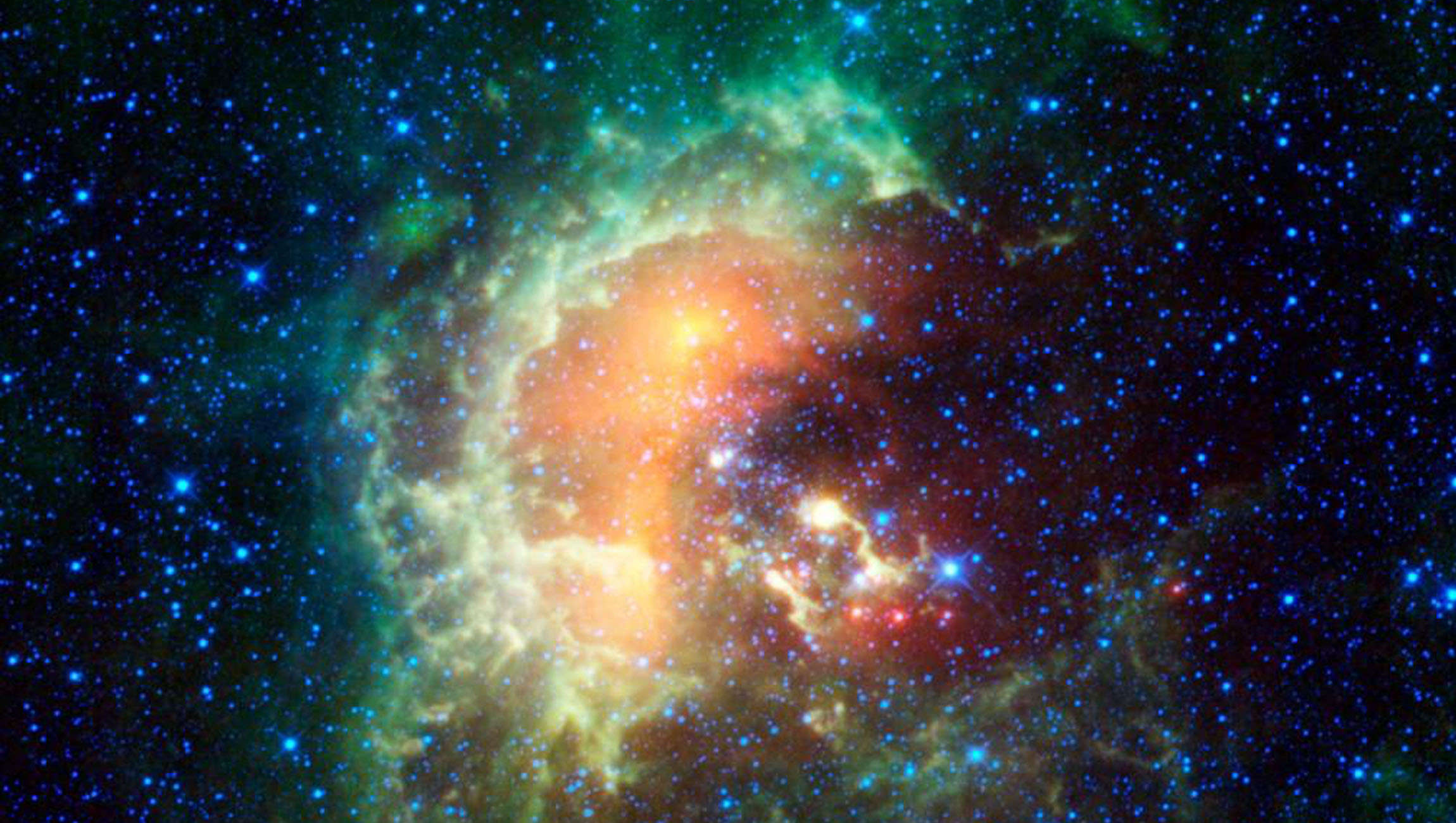Create a free profile to get unlimited access to exclusive videos, sweepstakes, and more!
Could a mesmerizing rainbow meteorite tell NASA how life on Earth emerged?

Rainbows might be an Instagram photo op almost guaranteed to get you likes, but it’s not every day they fall from the sky.
That actually happened in Costa Rica last year. The rainbow that fell from the sky was actually a meteorite, and while most burn up in the atmosphere, this one had broken into pieces before raining down between La Palmera and Aguas Zarcas. When held up to the light, what looks like charcoal shows off a brilliant multichrome sheen that looks something like an oil slick. Now NASA scientists studying this meteorite have unearthed a chemical composition that could be a window into the origins of the solar system and how life itself crawled out of Earth.
“In our lab, we specialize in looking for amino acids in meteorites. Some that we find are really rare on Earth. Isovaline is one of these. It is not very abundant on Earth, but you can find it in some microorganisms that would use it in metabolic processes,” NASA chemist José C. Aponte, whose research team put the meteorite under a microscope and recently published a study in Meteoritics & Planetary Science, told SYFY WIRE.
Aguas Zarcas, as the meteorite — more like its fragments — is now called, is a carbonaceous chondrite that is second in size only to Australia’s Murchison meteorite, which hurtled through the atmosphere in 1969. Carbonaceous chondrites are primitive carbon-heavy remnants of the early solar system. They are some of the most pristine relics of that era, made from the dust of what would become our solar system, and contain amino acids and other organics that are the stuff of life.
With extremely rare amino acids discovered in Murchison several years ago, Aguas Zarcas could reveal even more about what went on as the early solar system evolved. It has already been found to contain amino acids, which are what you get when you break down proteins and DNA. Most carbonaceous chondrites floating around in the distant past eventually smashed together into planets and moons and asteroids. They might have also done a faceplant into Earth and brought over organics like amino acids. Something about these amino acids stands out.
"The presence of amino acids in meteorites does not mean alien life," Aponte stressed, but he is open to speculation. "Everything alive is made of left-handed amino acids, even though left- and right-handed amino acids have the same exact physical chemical properties. We have found that in meteorites there is an excess of left-handed amino acids as opposed to right-handed, and we don't know why that is."
It is just as possible that, during the formation of the solar system, these meteorites have encapsulated amino acids and have just been floating around with them for billions of years. Nobody knows. Peering deeper into Aguas Zarcas has already revealed amino acids are known to exist in very few places on this planet. Further study may even find polymers that managed to escape being obliterated by the atmosphere as Aguas Zarcas fell to Earth.
"Organic compounds can and will naturally occur through different chemical processes that do not involve life," Aponte said. "Now we want to focus on what really constitutes a biosignature."
The only thing more pristine than Aguas Zarcas and Murchison could be samples from an asteroid that is still in space. Shards of Aguas Zarcas could have still been contaminated by the rainforest they landed in. This is why Hayabusa-2’s sample return from asteroid Ryugu later this year and the OSIRIS REx sample return from asteroid Bennu in 2023 is so highly anticipated.
"The great thing about Aguas Zarcas is that it will be used as a basis for comparison against samples from the Hayabusa-2 and OSIRIS REx missions," said Aponte, "Especially because there is so much available material from Aguas Zarcas. That makes it a really exciting meteorite."
Watch for falling rainbows until then.














